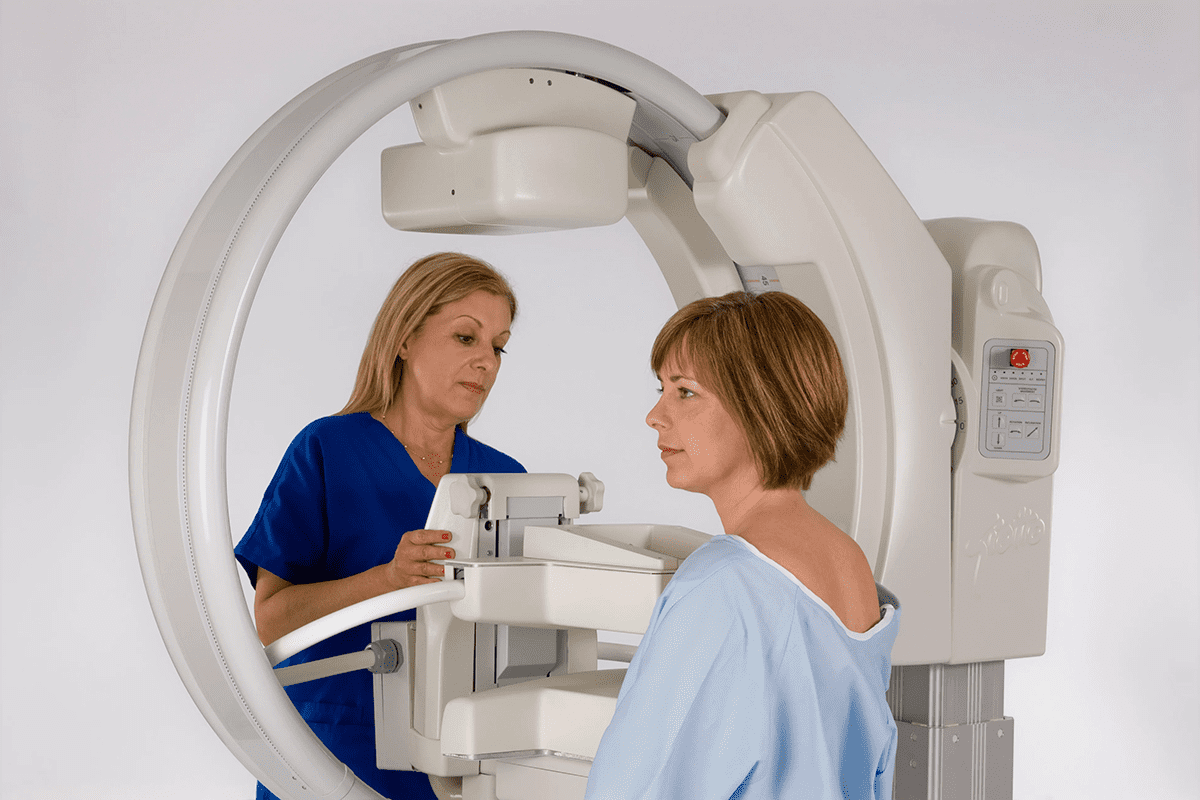Last Updated on November 27, 2025 by Bilal Hasdemir

XRT therapy is a key cancer treatment. It uses high-energy radiation to kill cancer cells and shrink tumors. This method targets the cancer area closely, protecting healthy tissues nearby.
External beam radiation therapy is a common XRT therapy type. It uses a machine to send radiation beams at the tumor from outside the body. Techniques like intensity-modulated radiation therapy improve XRT’s precision. This helps target tumors better while reducing harm to healthy tissues.
Key Takeaways
- XRT therapy is a cancer treatment that uses high-energy radiation to target malignant cells.
- External beam radiation therapy is a common form of XRT therapy.
- Advanced techniques enhance the precision of XRT therapy.
- XRT therapy minimizes damage to surrounding healthy tissues.
- It is used to treat various types of cancer, including breast and prostate cancer.
Understanding XRT Therapy and Its Role in Modern Cancer Treatment

XRT, or external radiation therapy, has changed how we treat cancer. It uses high-energy beams from outside the body to kill cancer cells. This method is designed to harm cancer cells more than healthy tissues nearby.
Definition and Medical Meaning of XRT Abbreviation
The term XRT means ‘external radiation therapy.’ It’s about using radiation beams from outside to fight cancer. In radiation oncology, XRT is a key treatment that has grown a lot over time.
External beam radiation therapy, or XRT, treats many cancers. It’s a precise way to hit the tumor without harming the tissues around it.
The Evolution of XRT Therapy in Oncology
XRT therapy has seen big changes in oncology. At first, it was not as precise, hitting bigger areas around the tumor. But with new technologies like Intensity-Modulated Radiation Therapy (IMRT) and Three-Dimensional Conformal Radiation Therapy (3D-CRT), it can now target the tumor more accurately.
These new methods have made treatments better and reduced side effects. The field of radiation oncology keeps getting better, with new research and ideas to make XRT therapy even more effective.
The Science Behind XRT Radiation: How It Targets Cancer Cells

XRT radiation uses beams of photons, protons, or electrons to harm cancer cells’ DNA. This stops them from growing. It’s a key part of treating many cancers.
Mechanism of Action on Cellular Level
At the cell level, XRT radiation breaks DNA strands in cancer cells. This can cause cell death or stop cell growth. The radiation beams used are photons, protons, and electrons.
Photon beams are the most common and can reach tumors deep in the body. They are great for treating tumors in sensitive areas.
XRT radiation works best when it targets cancer cells without harming healthy tissue. This is done through careful planning and precise delivery of the radiation dose.
Radiation Dosage and Fractionation Principles
Radiation dosage and fractionation are key in XRT therapy. Fractionation breaks the total dose into smaller parts. This lets healthy cells recover while cancer cells get more damage.
The total dose and fraction number depend on the cancer type, stage, and location. This ensures the treatment is effective.
| Cancer Type | Typical Radiation Dose (Gy) | Number of Fractions |
| Breast Cancer | 45-50 | 25-28 |
| Prostate Cancer | 75-80 | 35-40 |
| Lung Cancer | 60-66 | 30-33 |
Understanding radiation dosage and fractionation helps doctors create the best treatment plans. This is for patients with different types of cancer.
Types of XRT Radiation Therapy Used in Clinical Practice
In clinical practice, XRT therapy comes in different forms. Each is designed for specific cancers and patient needs. The choice depends on the tumor’s location, size, and stage, and the patient’s health.
External Beam Radiation Therapy (EBRT)
External Beam Radiation Therapy (EBRT) is the most common XRT method. It uses high-energy beams from a machine outside the body to target tumors. EBRT is flexible and can treat tumors in many body parts, even deep ones.
Key characteristics of EBRT include:
- Non-invasive, as the radiation source is outside the body
- Can be tailored to fit the shape of the tumor
- Can be used in combination with other treatments like surgery and chemotherapy
Internal Radiation Therapy Options
Internal radiation therapy, or brachytherapy, places radioactive material close to or inside the tumor. This method delivers high doses of radiation to the tumor while protecting healthy tissues.
| Therapy Type | Description | Advantages |
| EBRT | External beam radiation therapy | Non-invasive, versatile |
| Brachytherapy | Internal radiation therapy | High dose delivery to tumor, minimal side effects |
Choosing between EBRT and internal radiation therapy depends on the cancer type, stage, and patient’s condition. Both are effective in treating different cancers.
Advanced XRT Techniques and Technologies
Advanced XRT techniques have changed cancer treatment for the better. They offer more precise and effective radiation therapy options. These technologies help doctors give higher doses to tumors while protecting healthy tissues.
Intensity-Modulated Radiation Therapy (IMRT)
Intensity-Modulated Radiation Therapy (IMRT) is a cutting-edge XRT method. It changes the intensity of radiation beams to fit the tumor’s shape. This makes it safer for nearby healthy tissues.
IMRT is used a lot for complex tumors near sensitive organs. It uses advanced algorithms and special tools to make treatment plans that fit each patient’s needs.
Three-Dimensional Conformal Radiation Therapy (3D-CRT)
Three-Dimensional Conformal Radiation Therapy (3D-CRT) uses imaging to create a detailed 3D model of the tumor. This helps doctors shape the radiation beams to match the tumor’s shape. It makes treatment more accurate.
3D-CRT is a big step up from older radiation therapy methods. It gives better tumor coverage and lowers doses to healthy tissues.
Image-Guided Radiation Therapy (IGRT)
Image-Guided Radiation Therapy (IGRT) uses imaging during treatment to target the tumor accurately. This is key for tumors that move due to breathing or other body functions.
IGRT lets doctors make changes to the treatment plan in real-time. This ensures the radiation dose hits the tumor exactly, even if it moves. It makes treatment more effective and reduces side effects.
| Technique | Description | Benefits |
| IMRT | Modulates radiation beam intensity to conform to tumor shape | Highly conformal doses, reduced risk to adjacent tissues |
| 3D-CRT | Uses 3D imaging to shape radiation beams to tumor contours | Improved tumor coverage, reduced doses to healthy tissues |
| IGRT | Integrates imaging during treatment for accurate tumor targeting | Real-time adjustments, enhanced treatment effectiveness |
Common Cancer Types Treated with XRT Therapy
XRT therapy is a key part of cancer treatment. It targets cancer cells carefully, protecting healthy tissues. This method has greatly improved how we treat cancer, making life better for patients.
Breast Cancer Treatment
XRT is vital for breast cancer treatment, after surgery. It kills any cancer cells left in the breast, chest wall, or underarm. External beam radiation therapy is often used to treat the tumor site well.
Studies show XRT helps lower the chance of cancer coming back. It also boosts survival rates. New XRT methods, like Intensity-Modulated Radiation Therapy (IMRT), aim at the tumor more precisely. This reduces harm to healthy tissues.
Prostate Cancer Treatment
XRT targets the prostate gland in prostate cancer treatment. External beam radiation therapy and brachytherapy are the main XRT methods for this cancer.
Which method is chosen depends on the cancer’s stage and how aggressive it is. The patient’s health also plays a role. XRT for prostate cancer works well, with many patients having few side effects.
Pelvic and Other Tumor Types
XRT treats various pelvic tumors, like cancers of the cervix, rectum, and bladder. Modern XRT methods are precise. They treat these cancers well while protecting nearby tissues and organs.
| Cancer Type | Common XRT Techniques Used | Benefits |
| Breast Cancer | External Beam Radiation Therapy, IMRT | Reduces recurrence risk, improves survival rates |
| Prostate Cancer | External Beam Radiation Therapy, Brachytherapy | Effective disease control, minimal side effects |
| Pelvic Tumors (Cervix, Rectum, Bladder) | External Beam Radiation Therapy, IMRT, IGRT | Precise targeting, minimizes damage to surrounding tissues |
The XRT Treatment Process: What Patients Can Expect
For cancer patients, knowing what to expect during XRT therapy can help reduce anxiety. The XRT treatment process includes careful planning, precise treatment delivery, and thorough follow-up care.
Pre-Treatment Planning and Simulation
Before starting XRT, patients have a simulation session. This session helps determine the treatment area and plan the radiation dose. Accurate planning is key for XRT therapy success.
The pre-treatment planning involves:
- Imaging tests to locate the tumor
- Defining the treatment area
- Determining the optimal radiation dose
During XRT Treatment Sessions
After planning, patients start their XRT treatment sessions. These sessions are usually done on an outpatient basis. The treatment itself is painless. Patients are positioned carefully to ensure accurate radiation delivery.
During the treatment sessions:
- Patients are positioned on a treatment table
- Radiation therapists align the machine according to the treatment plan
- The radiation is delivered as planned
“The precision of modern radiation therapy has significantly improved patient outcomes. With careful planning and execution, XRT can effectively target cancer cells while minimizing damage to surrounding healthy tissue.”
Post-Treatment Follow-Up Care
After XRT, patients enter a follow-up care phase. They are monitored for treatment response and any side effects. Regular follow-up appointments are key for managing side effects and assessing treatment effectiveness.
Follow-up care may include:
- Regular check-ups with the radiation oncologist
- Imaging tests to assess treatment response
- Supportive care to manage side effects
By understanding the XRT treatment process, patients can better navigate their cancer treatment journey, from preparation through recovery.
Combining XRT with Other Cancer Treatments
Using XRT with other cancer treatments is key in today’s cancer care. This way, doctors can attack cancer cells from different angles. It makes treatment plans more complete.
XRT as a Local Treatment Approach
XRT targets a specific area where the tumor is. It can be used alone or with surgery and chemotherapy. Alone, XRT can kill cancer cells and shrink tumors.
Chemo XRT: Concurrent Chemotherapy and Radiation
Chemo XRT combines chemotherapy and radiation. Chemotherapy attacks cancer cells all over the body. XRT focuses on the tumor site. This combo makes cancer cells more vulnerable to radiation.
Benefits of Chemo XRT:
- Enhanced tumor response to treatment
- Potential for improved survival rates
- Ability to treat cancer cells both locally and systemically
XRT with Surgery, Immunotherapy, and Targeted Therapies
XRT can also be paired with surgery, immunotherapy, and targeted therapies. Before surgery, XRT can make tumors smaller. After surgery, it kills any leftover cancer cells.
Combining XRT with immunotherapy boosts the immune system’s fight against cancer. Targeted therapies, which target cancer cells’ specific traits, can also be used with XRT to better treatment results.
| Treatment Combination | Purpose | Benefits |
| XRT + Surgery | Shrink tumors before surgery or eliminate remaining cancer cells after surgery | Improved surgical outcomes, reduced risk of recurrence |
| Chemo XRT | Combine local and systemic treatment | Enhanced tumor response, potentially better survival |
| XRT + Immunotherapy | Enhance immune response against cancer cells | Improved treatment outcomes, potentially long-term cancer control |
By mixing XRT with other treatments, doctors can tailor plans for each patient. This approach can lead to better results and a better life for cancer patients.
Managing Side Effects of XRT Radiation Treatment
The success of XRT treatment depends on managing side effects well. Patients may face side effects based on the treated area and radiation dose. It’s key to manage these side effects to improve outcomes and quality of life.
Common Short-Term Side Effects
Short-term side effects include fatigue, skin reactions, and changes in bowel or bladder habits. For example, breast cancer patients might get skin irritation or feel tired. Prostate cancer patients might have urinary issues.
- Fatigue: Feeling tired or weak, which can be managed with rest and appropriate nutrition.
- Skin Reactions: Redness, itching, or blistering in the treated area, requiring gentle skin care.
- Bowel Changes: Diarrhea or constipation, which can be managed with dietary adjustments.
Potential Long-Term Complications
Modern XRT techniques have lowered the risk of long-term complications. These include fibrosis, secondary cancers, and organ damage. The risk depends on the radiation dose and treated area.
| Complication | Description | Management |
| Fibrosis | Scarring that can lead to stiffness or limited mobility | Physical therapy, pain management |
| Secondary Cancers | Cancers that develop as a result of radiation exposure | Regular follow-up, screening |
| Organ Damage | Damage to organs near the treated area | Monitoring, supportive care |
Supportive Care During XRT Treatment
Supportive care is vital to manage side effects and improve quality of life. It includes skin care, nutritional support, and symptom management. Patients should follow a care plan tailored to their needs.
Nutritional support is key, as a balanced diet helps manage side effects and aids recovery. Patients should stay hydrated and eat a diet rich in necessary nutrients.
Recent Advances in XRT Radiotherapy Research
Recent breakthroughs in XRT radiotherapy are changing cancer treatment for the better. The field of radiation oncology is seeing big steps forward. This includes the creation of higher-dose XRT protocols and emerging technologies that make treatments more effective.
Higher-Dose XRT Protocols and Improved Biochemical Control
Research shows that higher-dose XRT protocols can greatly boost biochemical control rates for localized cancers. A study on PMC found that adjusting radiation doses is key to better treatment results. It showed that higher doses lead to better disease control and lower recurrence rates in some cancers.
| Cancer Type | Standard Dose | Higher Dose | Biochemical Control Rate |
| Prostate Cancer | 70 Gy | 80 Gy | 85% |
| Breast Cancer | 50 Gy | 60 Gy | 90% |
Emerging Technologies in Radiation Oncology
New technologies in radiation oncology are transforming XRT radiotherapy. Innovations like proton therapy and advanced imaging are making treatments more precise and effective. These advancements allow for more tailored treatment plans, reducing side effects and improving patient results.
As research keeps moving forward, the future of XRT radiotherapy is bright. There’s a focus on refining treatment protocols and improving patient care. Studies aim to optimize radiation doses and techniques to enhance biochemical control rates and treatment success.
Making Informed Decisions About XRT Cancer Treatment
Choosing XRT cancer treatment means looking at how well it works and its side effects. Patients need to think about several things to see if XRT is right for them.
Questions to Ask Your Radiation Oncologist
When talking to a radiation oncologist, it’s good to have questions ready. This ensures you understand your treatment plan well. Here are some important questions to ask:
- What are the expected outcomes of XRT therapy for my specific type and stage of cancer?
- What are the possible short-term and long-term side effects of the treatment?
- How will the treatment be managed, and what supportive care options are available?
- Are there any alternative treatments or complementary therapies that could be used in conjunction with XRT?
These questions help patients understand what to expect from XRT therapy. This way, they can make better decisions about their care.
Evaluating Benefits and Risks for Your Specific Case
Looking at the benefits and risks of XRT cancer treatment needs a personal touch. It depends on the patient’s health, cancer type and stage, and what they prefer. Talking to a radiation oncologist can help sort out these details.
| Factors to Consider | Benefits | Risks |
| Cancer Type and Stage | Effective for localized tumors | May not be suitable for advanced stages |
| Patient’s Overall Health | Can be used in patients with certain comorbidities | May exacerbate existing health issues |
| Personal Preferences | Non-invasive option for some patients | Potential impact on quality of life |
By carefully looking at these factors and talking to a healthcare provider, patients can make informed choices. These choices should match their individual needs and situations.
Conclusion: The Future of XRT in Cancer Care
The future of XRT in cancer care looks bright. New advancements in radiation oncology are on the horizon. We can look forward to treatments that are even more precise and effective.
New technologies like artificial intelligence and machine learning might soon be part of cancer care. This could make treatments even more tailored to each patient’s needs.
Techniques like IMRT, IGRT, and proton therapy are already making XRT better. They help make treatments more precise and reduce side effects. This means XRT will play an even bigger role in fighting cancer.
As research keeps moving forward, XRT will continue to evolve. This brings new hope to both patients and doctors. XRT is set to remain a key part of cancer treatment, helping to improve outcomes for everyone.
FAQ
What is XRT therapy in cancer treatment?
XRT therapy uses high-energy radiation to kill cancer cells. It’s often given as external beam radiation therapy (EBRT).
What does the medical abbreviation XRT stand for?
XRT stands for ‘external radiation therapy.’ It uses beams from outside the body to target cancer cells.
How does XRT radiation target cancer cells?
XRT radiation damages cancer cells’ DNA. This stops them from growing and dividing. It causes DNA breaks, leading to cell death or stopping cell division.
What are the different types of XRT radiation therapy?
There’s external beam radiation therapy (EBRT) and internal radiation therapy. The latter places radioactive material inside or near the tumor.
What are some advanced XRT techniques used in cancer treatment?
Advanced techniques include intensity-modulated radiation therapy (IMRT) and three-dimensional conformal radiation therapy (3D-CRT). Image-guided radiation therapy (IGRT) also enhances precision and effectiveness.
What types of cancer are commonly treated with XRT therapy?
XRT treats many cancers, like breast, prostate, and pelvic tumors. Modern techniques help treat these cancers well while protecting nearby tissues.
What can patients expect during the XRT treatment process?
The process starts with planning and simulation. Then, treatment sessions follow. It ends with follow-up care. Patients get radiation as planned.
Can XRT be combined with other cancer treatments?
Yes, XRT can be used alone or with other treatments. Combining it with chemotherapy, for example, can make treatment more effective.
What are the possible side effects of XRT radiation treatment?
Side effects can be short-term or long-term. Short-term ones include fatigue and skin reactions. Long-term effects might include fibrosis, secondary cancers, and organ damage.
How can patients make informed decisions about XRT cancer treatment?
Patients should ask their radiation oncologist about their treatment plan. This includes expected outcomes, side effects, and how treatment will be managed. It’s important to weigh the benefits and risks.
What is the future of XRT in cancer care?
The future of XRT looks promising. New technologies, like proton therapy, will improve its precision and effectiveness.
References
- National Cancer Institute. (2018). External beam radiation therapy for cancer. https://www.cancer.gov/about-cancer/treatment/types/radiation-therapy/external-beam
- PMC. (2020). Radiotherapy and the cellular DNA damage response. https://pmc.ncbi.nlm.nih.gov/articles/PMC8992550/






